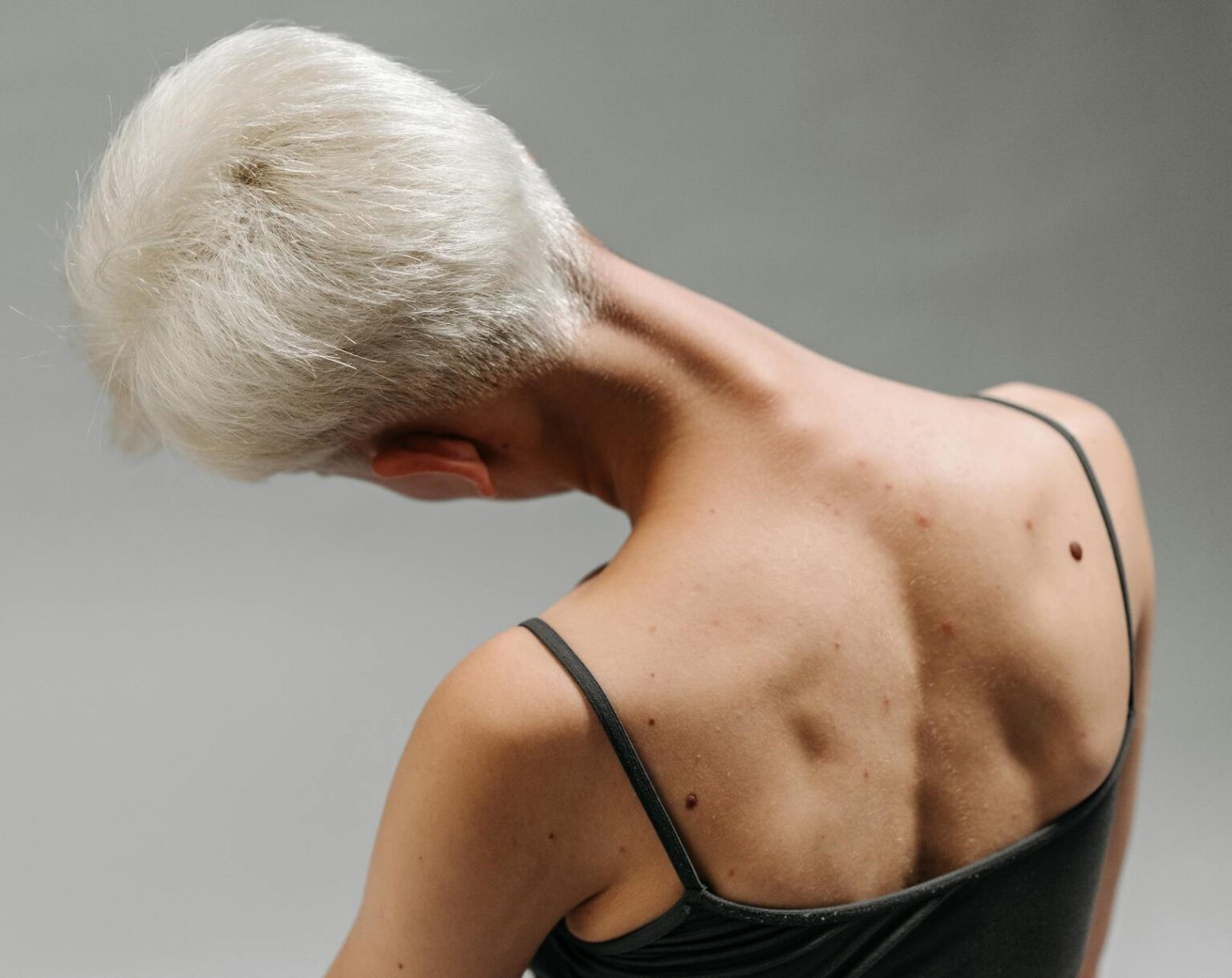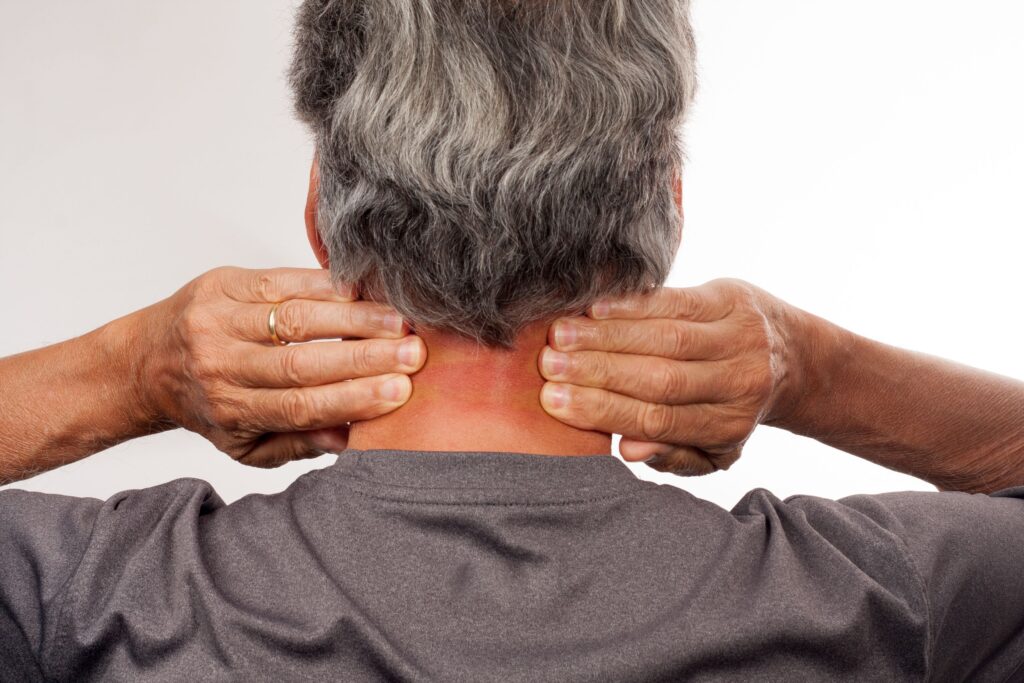SCHEDULE AN APPOINTMENT WITH US
Are Your Symptoms Affecting Your Quality Of Life?
Consult our MOH-accredited orthopaedic specialist for an accurate diagnosis & personalised treatment plan today.

MBBS (S’PORE)
MRCS (Ireland)
MMed (Ortho)
FRCSEd (Ortho)

Cervical spondylosis, often referred to as arthritis of the neck, is a common, age-related condition that affects the joints and discs in the cervical spine, which is located in the neck. It is marked by the wear and tear of cartilage and bones in the neck.
Myelopathy, in the context of cervical spondylosis, refers to the compression of the spinal cord in the cervical region. This compression can lead to a range of neurological symptoms. Myelopathy is a more severe condition and is considered a major complication of cervical spondylosis.
The development of cervical spondylosis and myelopathy is typically linked to age-related changes in the spine. However, several factors can contribute to or accelerate these changes:
Common symptoms of cervical spondylosis and myelopathy include:


SCHEDULE AN APPOINTMENT WITH US
Consult our MOH-accredited orthopaedic specialist for an accurate diagnosis & personalised treatment plan today.
Diagnosing cervical spondylosis and myelopathy involves a comprehensive approach that includes clinical evaluation, patient history, and diagnostic imaging. The process typically includes:
The orthopaedic surgeon will inquire about symptoms, their onset, and any activities or factors that worsen them. A physical examination can assess neck movement, muscle weakness, reflexes, and sensory deficits.
Imaging tests play a crucial role in diagnosing cervical spondylosis and myelopathy. Common imaging modalities include:
In some cases, tests to assess nerve function may be conducted. These include electromyography (EMG) and nerve conduction studies, which evaluate the electrical activity of muscles and the speed of nerve signals.
While not used to diagnose cervical spondylosis directly, blood tests can help rule out other conditions that may mimic its symptoms, such as rheumatoid arthritis or infections.
Non-surgical treatments aim to relieve pain, improve function, and delay or avoid the need for surgery. Common non-surgical treatments include:
Physical Therapy: Physical therapy can be crucial in managing cervical spondylosis. Exercises to strengthen neck muscles, improve flexibility, and maintain the range of motion can help alleviate symptoms and prevent further degeneration.
Medications: Various medications can be used to manage pain and inflammation. These include:
Lifestyle Modifications: Making changes to daily activities can help manage symptoms. This includes using ergonomic furniture, avoiding activities that strain the neck, and practising good posture.
Heat and Cold Therapy: Applying heat or cold to the neck can provide temporary pain relief. Heat therapy can relax tense muscles, while cold therapy can reduce inflammation and numb pain.
Soft Neck Collar: For temporary relief, especially in acute flare-ups, a soft neck collar can be used to provide support and limit neck motion, allowing muscles to rest.
Surgery for cervical spondylosis and myelopathy is generally considered when non-surgical treatments have failed to relieve symptoms, or when there is significant spinal cord or nerve root compression. Common surgical options include:

MBBS (S’pore)
MRCS (Ireland)
MMed (Ortho)
FRCSEd (Ortho)
Dr Kau (许医生) is a Fellowship trained Orthopaedic Surgeon with a subspecialty interest in Hip and Knee surgery and has been in practice for more than 15 years.
He is experienced in trauma and fracture management, sports injuries, and joint replacement surgery.
While cervical spondylosis is often related to ageing and may not be entirely preventable, some strategies can help reduce the risk of developing it or slow its progression. These include:
For Singaporeans, Singapore Permanent Residents and Foreigners.
Please speak to our friendly clinic staff about using your insurance plans.

If you have any enquiry, please do get in touch. Leave us a message and we will get back to you shortly.
Cervical spondylosis is a chronic condition, primarily due to ageing, and cannot be completely cured. However, the symptoms can often be effectively managed with appropriate treatment. The focus is usually on relieving pain, improving function, and maintaining quality of life.
Cervical spondylosis is very common, particularly in older adults. The risk of developing it increases with age. However, it can also affect younger individuals, especially those with a history of neck injury or those in occupations involving repetitive neck movements.
Exercise is generally beneficial for cervical spondylosis as it helps in maintaining neck strength and flexibility. However, exercises that strain the neck excessively should be avoided. Consulting an orthopaedic surgeon for appropriate exercise recommendations is advisable.
Surgery is not always necessary for cervical myelopathy. The need for surgery depends on various factors, including the severity of symptoms, the degree of spinal cord compression, and the patient’s overall health. Non-surgical treatments are often considered before resorting to surgery.